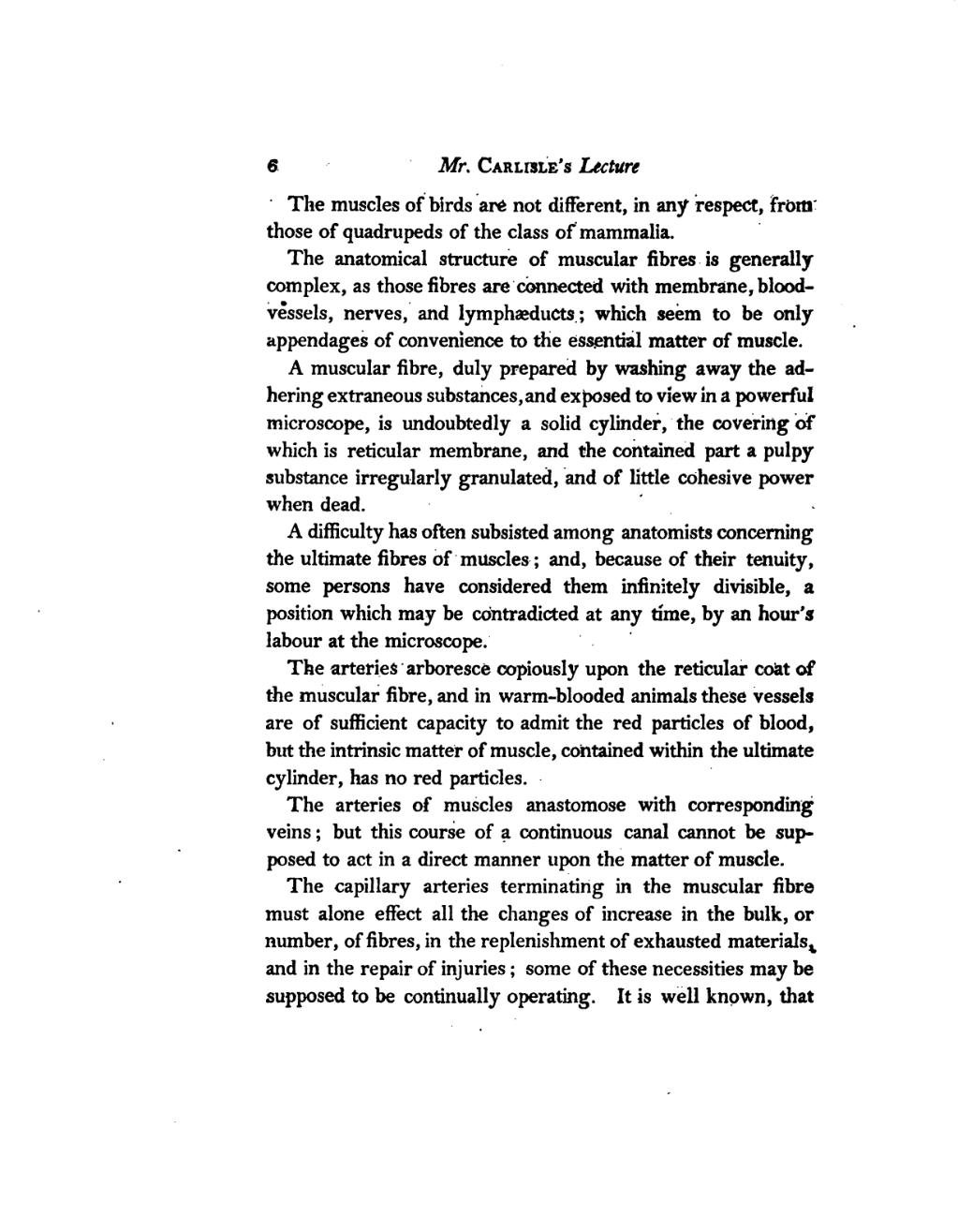The muscles of birds are not different, in any respect, from those of quadrupeds of the class of mammalia.
The anatomical structure of muscular fibres is generally complex, as those fibres are connected with membrane, blood-vessels, nerves, and lymphæducts; which seem to be only appendages of convenience to the essential matter of muscle.
A muscular fibre, duly prepared by washing away the adhering extraneous substances, and exposed to view in a powerful microscope, is undoubtedly a solid cylinder, the covering of which is reticular membrane, and the contained part a pulpy substance irregularly granulated, and of little cohesive power when dead.
A difficulty has often subsisted among anatomists concerning the ultimate fibres of muscles; and, because of their tenuity, some persons have considered them infinitely divisible, a position which may be contradicted at any time, by an hour's labour at the microscope.
The arteries arboresce copiously upon the reticular coat of the muscular fibre, and in warm-blooded animals these vessels are of sufficient capacity to admit the red particles of blood, but the intrinsic matter of muscle, contained within the ultimate cylinder, has no red particles.
The arteries of muscles anastomose with corresponding veins; but this course of a continuous canal cannot be supposed to act in a direct manner upon the matter of muscle.
The capillary arteries terminating in the muscular fibre must alone effect all the changes of increase in the bulk, or number, of fibres, in the replenishment of exhausted materials, and in the repair of injuries; some of these necessities may be supposed to be continually operating. It is well known, that
